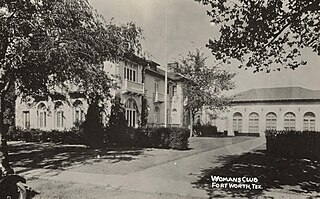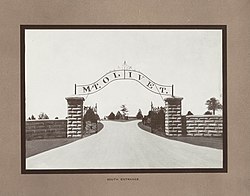
Fort Worth is a city in the U.S. state of Texas and the seat of Tarrant County, covering nearly 350 square miles (910 km2) into Denton, Johnson, Parker, and Wise counties. According to a 2024 United States census estimate, Fort Worth's population was 978,468, making it the 5th-most populous city in the state and the 12th-most populous in the United States. Fort Worth is the second-largest city in the Dallas–Fort Worth–Arlington metropolitan area, which is the fourth-most populous metropolitan area in the United States, and the most populous in Texas.

Trinity Metro is a transit agency located in and serving the city of Fort Worth, Texas and its suburbs in surrounding Tarrant County, part of the Dallas–Fort Worth metropolitan area. Since 1983, it was previously known officially as the Fort Worth Transportation Authority (FWTA), and branded itself as The T. As of January 29, 2018 the Board of Directors has voted to rebrand bus services as Trinity Metro, replacing the previous and long standing name. In 2023, the system had a ridership of 5,717,800, or about 17,900 per weekday as of the first quarter of 2024.

Tarrant County College (TCC) or Tarrant County College District (TCCD) is a public community college in Tarrant County, Texas. It offers five transferrable degrees as well as degrees and certificates in occupational and technical programs. The district consists of five physical campuses, a virtual campus and a centralized office.

Fort Worth Independent School District is a school district based in Fort Worth, Texas, United States. Based on a 2017-18 enrollment of 86,234 students, it is the fifth largest school district in Texas.

R. L. Paschal High School is a secondary school in Fort Worth, Texas, United States. It is part of the Fort Worth Independent School District, and is the oldest and largest high school in Fort Worth ISD.
Greenwood Memorial Park at White Settlement Road and Boland Street in Fort Worth, Texas, has been a perpetual care commercial cemetery since its dedication in 1909. The Mount Olivet Corporation, a non-profit organization was founded by the Bailey family of Fort Worth. The organization is overseen by a local elected board of trustees.

The Fort Worth Star-Telegram is an American daily newspaper serving Fort Worth and Tarrant County, the western half of the North Texas area known as the Metroplex. It is owned by The McClatchy Company.

Edward H. Tarrant served the Republic of Texas and the State of Texas. He also served in the Texas House of Representatives during both periods. Tarrant County was named for him.
The following is a timeline of the history of the city of Arlington, Texas, USA.
The following is a timeline of the history of the city of Fort Worth, Texas, United States.
The Baldridge House is a historic three-story mansion in Fort Worth, Texas, U.S. It was built from 1910 to 1913 for Earl Baldridge, a cattleman and rancher who later became a banker, and his wife Florence. It was designed by Sanguinet & Staats. It was purchased by Paun Peters, the president of the Western Production Company, in 2007. It was listed for sale for $8 million in 2017.

Mary Daggett Lake (1880–1955) was an American historian, botanist, and educator instrumental in documenting early North Texas settlers and promoting the appreciation and use of native Texas plants. A Fort Worth, Texas civic leader, she led the garden club movement in Texas, wrote numerous columns for state and local newspapers, and was instrumental in the creation of the Fort Worth Botanic Garden, the oldest botanical garden in Texas.

Oakwood Cemetery is a historic cemetery in the city of Fort Worth, Texas. Deeded to the city in 1879, it is the burial place of prominent local citizens, pioneers, politicians, and performers.

Hazel Vaughn Leigh was a philanthropist and civic leader in Fort Worth, Texas. As founder and longtime director of the Fort Worth Boys Club, she devoted her life to improving the lives of boys in Fort Worth and Tarrant County. She was the first, and for many years, only female director of a boys' club in the United States. Leigh was inducted into the Texas Women's Hall of Fame in 1993.

Pioneers Rest is the oldest public cemetery in Fort Worth, Texas and one of the oldest in Tarrant County. Its use as a burial ground began in the summer of 1850, shortly after the fort was established by the United States Army.

The Woman's Club of Fort Worth is one of the city's oldest membership organizations, formed in 1923 by the members of several existing woman's clubs. The Woman's Club complex comprises eight historic buildings on Fort Worth's Near Southside and was listed on the National Register of Historic Places in 2017. As with many woman's clubs in the United States, the Woman's Club of Fort Worth has its roots in the Progressive Movement, with its original mission of "the cultural and civic advancement of Fort Worth; and the study of literature, history, science, painting, music, and other fine arts."

Anna Shelton was an American businesswoman who founded several women's clubs in Fort Worth, Texas, most notably The Woman's Club of Fort Worth. She was active in Fort Worth's park league, the Fort Worth Library Association, Mary Isham Keith Chapter DAR, and the Fort Worth Art Association. Shelton became one of Fort Worth's first female real estate developers and homebuilders.

Samuel S. Losh (1884–1943) was a vocalist, composer and music educator in Fort Worth, Texas.
















